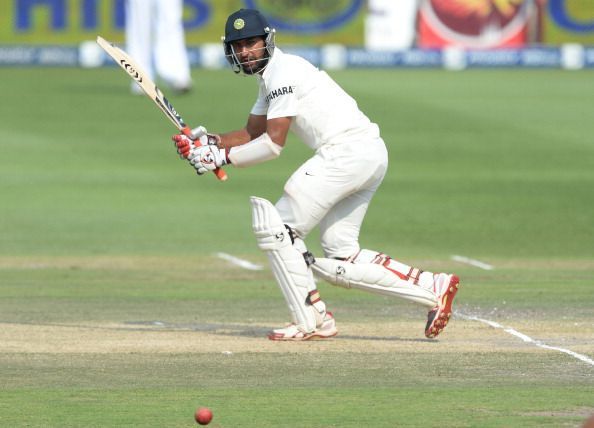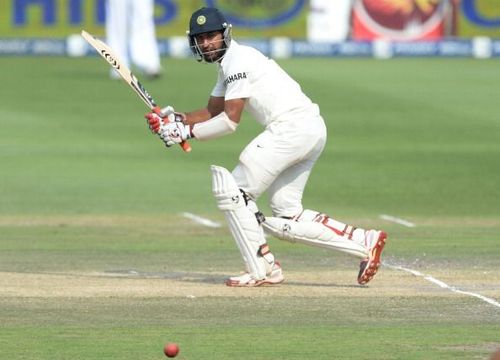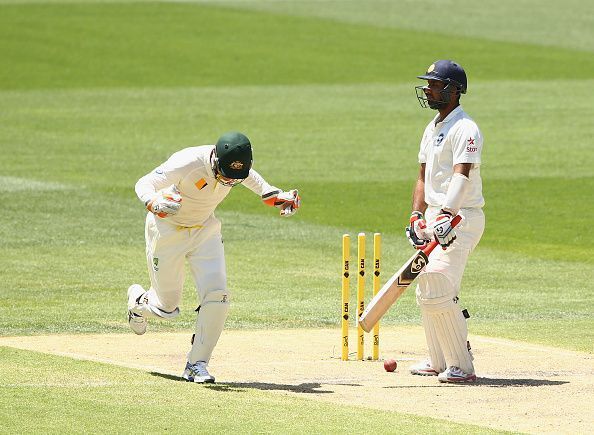
Onus on Cheteshwar Pujara to step up outside Asia

India have the same set of Test batsmen from numbers three to six on their current trip to South Africa as on their previous one just over four years ago. Since that tour began in December 2013, other than those two Tests, they have played in New Zealand, England, Australia, Sri Lanka [twice] and West Indies to go with a solitary Test in Bangladesh. And amidst all that, came twenty Tests at home.
A full cycle of tours and series later, India have returned to try and aim yet again for their maiden Test series triumph in South Africa. Cheteshwar Pujara, India's number three throughout all those series, including the last visit to Africa, has struggled to match his consistency at home to that outside the spin-friendly conditions of the sub-continent.
Having played two out of three Tests on the 2010-11 tour of South Africa, Pujara had cemented his place in the side by 2013 and hit a masterful 153 in a thrilling draw at Johannesburg – till date, that remains his only Test hundred outside Asia – and 70 at Durban. In two other chances, he settled down well to score 25 in 98 balls and 32 in 100, but fell each time after looking comfortable against the conditions and the pace of the wicket.
A similar pattern followed on the subsequent overseas tours: three starts in New Zealand amounted to nothing; eight times out of ten he entered double figures in England, but his highest score remained 55; in Australia, Pujara was dismissed four times between 20 and 45, his only score over fifty being 73, resulting in an axe for the final Test; and twice he looked good in West Indies, but a far too cautious approach had him dropped for the third Test.
Contrastingly, he has hit three centuries in four Tests in Sri Lanka since 2015, pitches ideal for his style of play, as he prefers the ball to come on slowly and utilize that extra second to choose whether to defend or to strike the ball using his expert bottom handed technique. Also, at home in this four-year period from late 2013 until the end of 2017, Pujara has been exceptional: 1,807 runs having played all twenty Tests and batted an average of over 56, slamming 5 hundreds and 10 fifties, including a marathon effort of 202 against Australia at Ranchi.
All this is an indication of his strength to play on slower pitches where the ball remains low, allowing him to fully get on top of the opposition on surfaces where the ball would rarely jump over the knee. But on tracks favouring pace and bounce, Pujara has most often ended up wasting the initial hard work of having settled down and stabilized the innings.

While he sees off the relatively new ball swinging either way from comparatively fresher bowlers than what his colleagues lower down would face, Pujara's loss of concentration has cost the team and himself a number of times – 23 at Auckland and 21 at Adelaide in 2014, both in the second innings, went a long way in India falling short after getting agonisingly close. Though the fault had not been Pujara's alone in those matches, as a top order batsman, him not standing up to his responsibility of being the driving force from number three has hurt India.
After being overlooked for the Sydney Test in 2015, Pujara also did not start the first two Tests of the 2015 series in Sri Lanka, and one year later in West Indies, was again benched in favour of Rohit Sharma. While he averages a fantastic 62.98 in India and has already become one of the most successful Indian batsmen on home grounds, Pujara's average slides down to a modest 29.52 outside Asia.
He has reached hundred only once in 29 innings and with Morne Morkel, Vernon Philander and Kagiso Rabada threatening to attack him with a combination of pace, bounce and swing, Pujara must step up and make use of this opportunity to collect good runs outside his comfort zone.
For that to happen, he will have to show what he has learnt from two previous visits to South Africa, and in other bowler-friendly conditions of England and New Zealand. What might encourage the team and Pujara himself, though, would be how he stood apart against Sri Lanka at Kolkata recently under grey skies on a surface where the ball danced around viciously. That may have given a hint of his improving concentration just at the right time, but South African pitches will also be quick and provide plenty of bounce, something which he is yet to conquer.